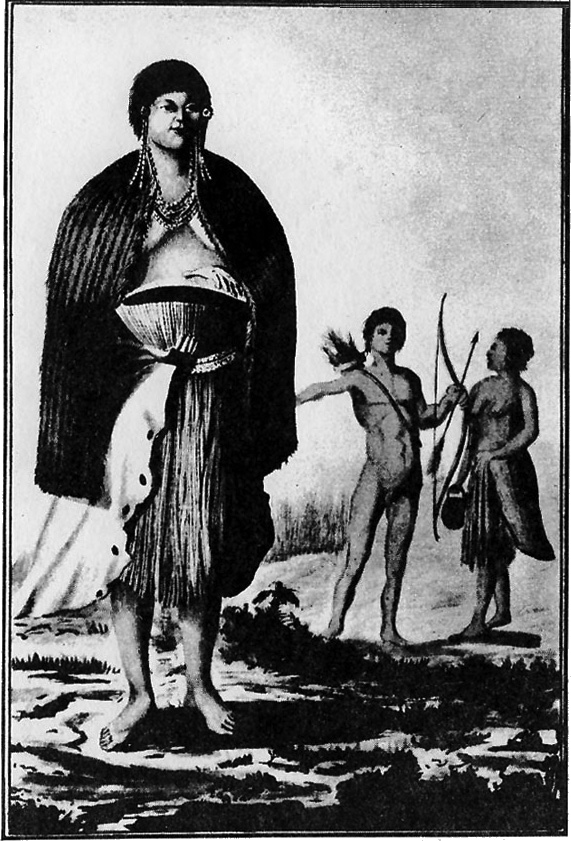I’m an armchair anthropologist. Basically, that means two things about me: I like to read about ancient peoples and, as a hiker, I like to go and find evidence of their lives. Although I am admittedly not an expert in the social, cultural or archaeological aspects of the Native American experience, I absolutely admit to a great enthusiasm for discovering how the earliest inhabitants lived.
I take my cue from Albert Einstein who said, “I have no special talent. I am only passionately curious.”
A little history. The Central Coast has had people living here for thousands of years. The earliest Californians were the Ohlone, also known as the Costanoans, whose range extended as far north as San Francisco, south to Big Sur and east to the Diablo Range. The Ohlone, scattered throughout this region, were made up of approximately 40 different tribes of 100 to 250 members, each with distinct customs and territory. They were hunter/gatherers, utilizing the resources at hand. There was also a small population of Esselen Native Americans who traversed Carmel Valley to the Big Sur coast and back, adapting to the seasonal changes that drove their hunter/gatherer existence.
I could go on about the history, but there are some really good books written about this subject that present a much more in-depth look at this period of California history. Also, a number of the local museums have excellent collections of Native artifacts that tell this story.
The story I want to tell is where you can go to see this evidence … undisturbed, in it’s natural setting.
On many of my hikes, I’ve come across bedrock mortar, hollowed out holes created by the grinding of acorn flour by the Native peoples. No matter how many I’ve chanced upon, there’s something about seeing these timeworn depressions that makes me stop in my tracks and dip my hand into history. Think about what they represent … grinding, grinding, grinding thousands of pounds of acorns into flour, which then had to be leached before it could be used in food preparation. I’ve also read the term “gossip stone” referencing this mortars, which at least makes me hope there was some social interaction happening during this process, the task bringing people together.
If you pay attention, you’ll come across bedrock mortars on the Soberanes Canyon Trail near Garrapata State Beach, in Big Sur. Hike the Ventana Wilderness Area, which covers much of Big Sur and parts of Carmel Valley, and you’ll find some. And, there is a large boulder that has a dozen or more as you hike up to Devil’s Peak, north of Camp Pico Blanco in the Los Padres National Forest. With more than a hundred sites throughout the Central Coast you’re sure to stumble across one.
There are pictographs, painted images on rock, scattered about this area, also. A few miles from the Carmel Valley town of Tassajara, deep in the Ventana Wilderness Area, is perhaps the most well-documented: the Cave of Hands. Painted by the Esselen people more than 3,000 years ago, there are about 250 skeletal-looking handprints on the rock wall. Interestingly, each was made by tracing the hand and then filling it in with long, strokes of color. The hands, pointed in all direction, have fingers slightly outstretched, reaching out. It’s an amazing site. So amazing that Robinson Jeffers, poet and outdoorsman who also hand-built his home, Tor House in Carmel, paid homage to our earliest inhabitants:
Hands
Inside a cave in a narrow canyon near Tassajara
The vault of rock is painted with hands,
A multitude of hands in the twilight, a cloud of men’s palms, no more,
No other picture. There’s no one to say
Whether the brown shy quiet people who are dead intended
Religion or magic, or made their tracings
In idleness of art; but over the division of years these careful
Signs-manual are now like a sealed message
Saying: “Look: we also were human; we had hands, not paws.
All hail
You people with the cleverer hands, our supplanters
In the beautiful country; enjoy her a season, her beauty, and come down
And be supplanted; for you are also human.
The human story … gets me out of my armchair every time.
photo: Esselen-native-c.-1791-by-José-Cardero




